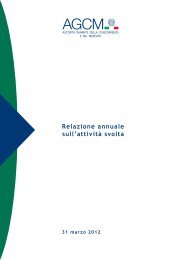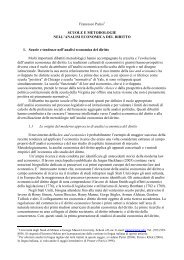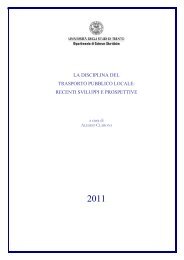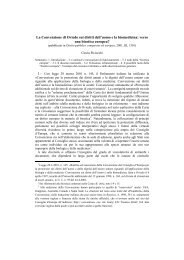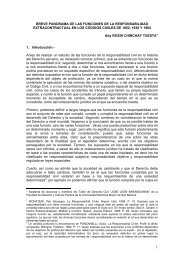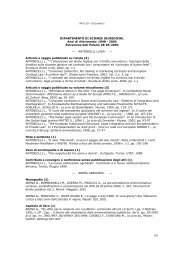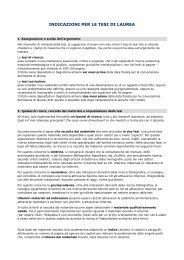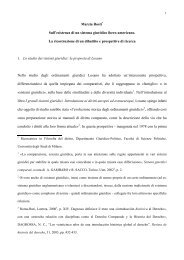The Futility of Unification and Harmonization in International ...
The Futility of Unification and Harmonization in International ...
The Futility of Unification and Harmonization in International ...
You also want an ePaper? Increase the reach of your titles
YUMPU automatically turns print PDFs into web optimized ePapers that Google loves.
14Does the similarities among these technocratic lawmak<strong>in</strong>g processes extend to the content <strong>of</strong> lawsthey produce? If so, we can predict that the <strong>in</strong>struments <strong>in</strong>tended to promote unification will displayseveral characteristics. <strong>The</strong>y <strong>of</strong>ten will <strong>in</strong>crease legal risk beyond optimal levels. <strong>The</strong> <strong>in</strong>crease willcome from substitut<strong>in</strong>g an <strong>in</strong>ternational st<strong>and</strong>ard that leaves considerable discretion to nationaldecisionmakers, especially judicial bodies, for preexist<strong>in</strong>g national rules that may be more developed<strong>and</strong> conf<strong>in</strong><strong>in</strong>g. Those <strong>in</strong>stances where the <strong>in</strong>struments provide greater certa<strong>in</strong>ty than does priornational law <strong>of</strong>ten will represent victories for narrow economic <strong>in</strong>terests rather than the generalwelfare. <strong>The</strong> triumphs <strong>of</strong> these <strong>in</strong>terests should occur <strong>in</strong> cases where a s<strong>in</strong>gle concentrated groupwith a coherent preference faces no opposition from other such groups <strong>and</strong> f<strong>in</strong>ds it possible tooutmaneuver the reformist members <strong>of</strong> a task force when it lobbies the body that approves an<strong>in</strong>strument. More generally, we should not expect unification efforts to achieve a clear <strong>and</strong> def<strong>in</strong>itebreak with the prior laws even when the status quo seems <strong>in</strong>adequate <strong>in</strong> light <strong>of</strong> broadly acceptednormative criteria.How accurate are these predictions? In the next section I review several important <strong>in</strong>strumentsthat have emerged from the <strong>in</strong>ternational unification process. My survey, while neithercomprehensive nor systematic, does suggest that technocratic lawmak<strong>in</strong>g does no better <strong>in</strong> that<strong>in</strong>ternational arena than when it proceeds through the ALI or the NCCUSL. I raise enough questionsabout the overall value <strong>of</strong> past efforts to justify an attempt to develop alternative approaches tounification <strong>and</strong> harmonization.D. Open-ended Discretion <strong>and</strong> Bright L<strong>in</strong>es <strong>in</strong> <strong>Unification</strong> InstrumentsI exam<strong>in</strong>e six <strong>in</strong>struments. <strong>The</strong> selection rests not on any presumed criteria <strong>of</strong> typicality, as Irema<strong>in</strong> unsure as to what constitutes a “representative” unification law. Rather, I concentrate onprom<strong>in</strong>ence <strong>and</strong> significance. Different unification organizations produced these laws, so they do notreflect only one group’s predilections. Four <strong>of</strong> the first five <strong>in</strong>struments—the Hague Rules, theWarsaw Convention, the CISG, <strong>and</strong> the UCP—today govern a wide array <strong>of</strong> <strong>in</strong>ternational commercialtransactions. <strong>The</strong> Hamburg Rules purport to replace the Hague Rules <strong>and</strong> thus deserves considerationalongside the preexist<strong>in</strong>g law. <strong>The</strong> sixth, UNCITRAL’s Model Law on Cross-BorderInsolvencies (UNCITRAL Insolvency Law), was adopted <strong>in</strong> 1997 <strong>and</strong> has not yet come <strong>in</strong>to force,directly or <strong>in</strong>directly, anywhere. But it represents one important group’s effort to wrestle with agrow<strong>in</strong>g problem present<strong>in</strong>g clear collective action difficulties. How the model law confronts thesechallenges suggests someth<strong>in</strong>g generally about the ability <strong>of</strong> unification <strong>in</strong>struments to produce ga<strong>in</strong>sfrom <strong>in</strong>ternational cooperation.1. Sea Transport—<strong>The</strong> Hague <strong>and</strong> Hamburg RulesConsider first the unification <strong>of</strong> the legal rules relat<strong>in</strong>g to one <strong>of</strong> the most ancient technologies <strong>in</strong><strong>in</strong>ternational commerce, namely carriage <strong>of</strong> goods by ship. <strong>The</strong> lion’s share <strong>of</strong> <strong>in</strong>ternational sale <strong>of</strong>goods <strong>in</strong>volves sea transport. Technological <strong>in</strong>novations such as conta<strong>in</strong>erization, advancedtelecommunications, satellite-assisted navigation, <strong>and</strong> electronic storage <strong>and</strong> dissem<strong>in</strong>ation <strong>of</strong> shipp<strong>in</strong>gdocuments <strong>and</strong> <strong>in</strong>formation have affected the efficiency, cost structure <strong>and</strong> reliability <strong>of</strong> this <strong>in</strong>dustry,but the fundamental legal issues have not changed much s<strong>in</strong>ce the time <strong>of</strong> the Phoenicians.



